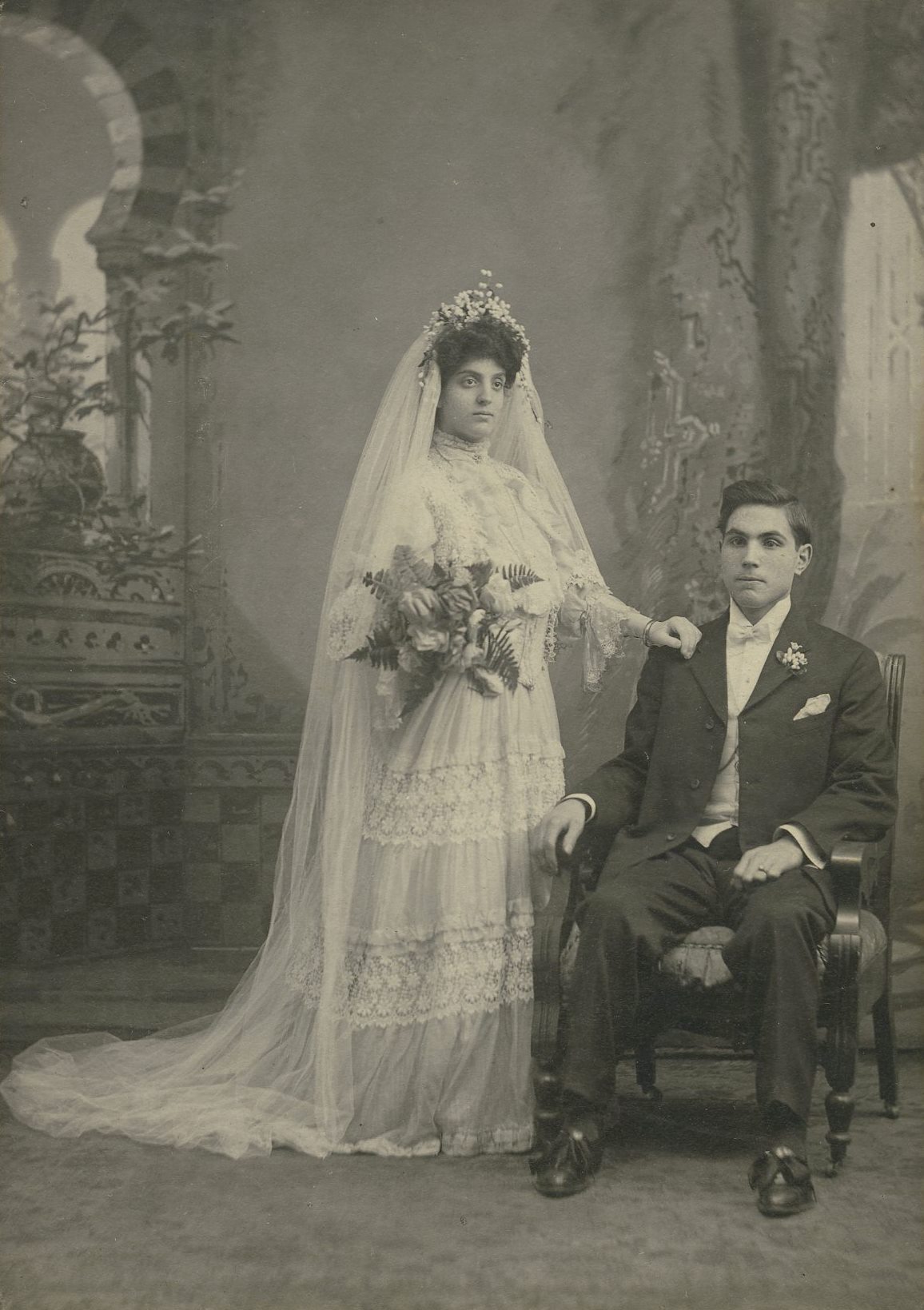
Say Yes to the Dress: LYNN
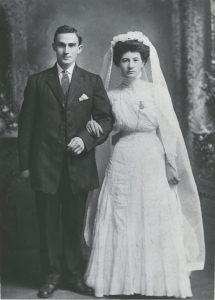
Wedding portrait for Mr. and Mrs. Studly.
By Rianon Prushinski
One of my favorite guilty pleasures is watching Say Yes to the Dress–any version will do, but the Atlanta one is my personal favorite. I love watching brides try on a bunch of radically different styles of dresses. They have organza mermaid dresses with a band around the middle, ivory A-lines with floral detail, or classic ball gowns with beaded bodices (I’m partial to a blush pink ball gown myself).
And the DRAMA? I live for the tension between the bride and her over-critical mother (or in some instances: mother-in-law). The climactic moment when the bride finally snaps back is what reality TV dreams are made of! The white wedding dresses on those shows seem to have always been the standard. So, who set the stage for the traditional modern wedding dress?
Queen Victoria!
In 1840, Queen Victoria married Prince Albert of Saxe-Coburg and Gotha. Her attire is where we get most of our inspiration for wedding dresses today. She wore a gown of white silk decorated with orange blossoms. Her dress had both a train and a veil to accentuate her royal status. Thus, the modern concept of the wedding dress was born.
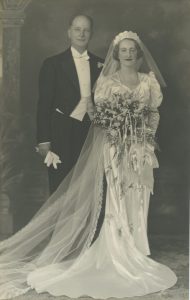
Wedding portrait of Harold and Clarice Wahl.
The idea of a wedding dress is also a fairly new concept. For a long time, weddings were generally contractual with no real need for a wedding dress specific to the occasion. Until the 20th century, it was common for brides to get married wearing the best dress they already owned, whatever color or style that may be. It could be blue, green, black, red, plaid, anything in fashion because they would be wearing it again as their Sunday best. The idea that anyone would wear a dress only once, even if you were royalty, was absurd. Most brides altered their wedding dresses for future use or just wore them again as is.

Group photograph from the Kelley and Schier wedding.
White dresses didn’t become the standard until the 20th century, after World War II. This is when gowns begin to resemble Lori’s lovely selection for her brides on Say Yes to the Dress: Atlanta.
Veils have a fascinating history, originating in Ancient Rome. The veils Roman brides wore around their heads and faces were called flammeum. Often, they came in bright colors such as red or egg-yolk yellow. Their purpose was to ward off evil spirits by mimicking a flame. In Victorian England, veils indicated social status based on weight, length, and quality. Nowadays, veils are there for aesthetics instead of warding off marriage curses!
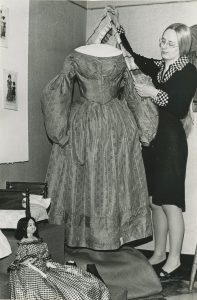
19th century wedding gown from Lynn Historical Society Collection.
Trains, like veils, also represented a bride’s social status based on the extra fabric they could afford. Now, they’re more of a fashion statement than a social statement, but there are some extraordinary veils out there! The French construction company, Dynamic Projects, achieved the Guinness World Record for the longest dress train at 26,559.71 feet in 2017!
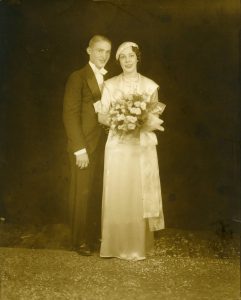
Portrait for the Espinola Swidurski wedding.
Lynn Museum has a particular strength with wedding dresses in the collection, all donated by people who lived in Lynn. The garments come in a variety of colors and styles, but most are white dresses from the 20th century. However, we do have a dark green grosgrain wedding dress that has a green geometric motif on the brocade of the skirt. We even have a wedding dress of cream and gold. Not what pops into your head when you think of a “wedding dress,” is it?
With COVID-19, it’s been hard to see weddings fall to the wayside out of necessity. With smaller ceremonies and family members joining over Zoom, weddings look pretty different in the 2020s. Wedding dresses and other artifacts have brought up questions about the future. When will we return to “normal” weddings? How will “pandemic weddings” from this past year be documented and preserved for the future?

Rianon Prushinski is a senior English major at Endicott College in Beverly, MA. She’s written collections of both fiction and nonfiction. As she concludes her career at Endicott, she’s working on her first novel (about a circus! Shhh, don’t tell…). She has grown up in Lynn all of her life, graduating from Lynn Classical High School in 2017. Her attendance at Endicott was made possible by the Learning and Leadership Program which creates collegiate opportunities for Lynn students. Currently, she is interning at Lynn Museum/LynnArts during her final semester…and she has totally gotten over that one time when she went skiing and broke her nose. Really, she has.





